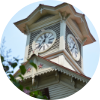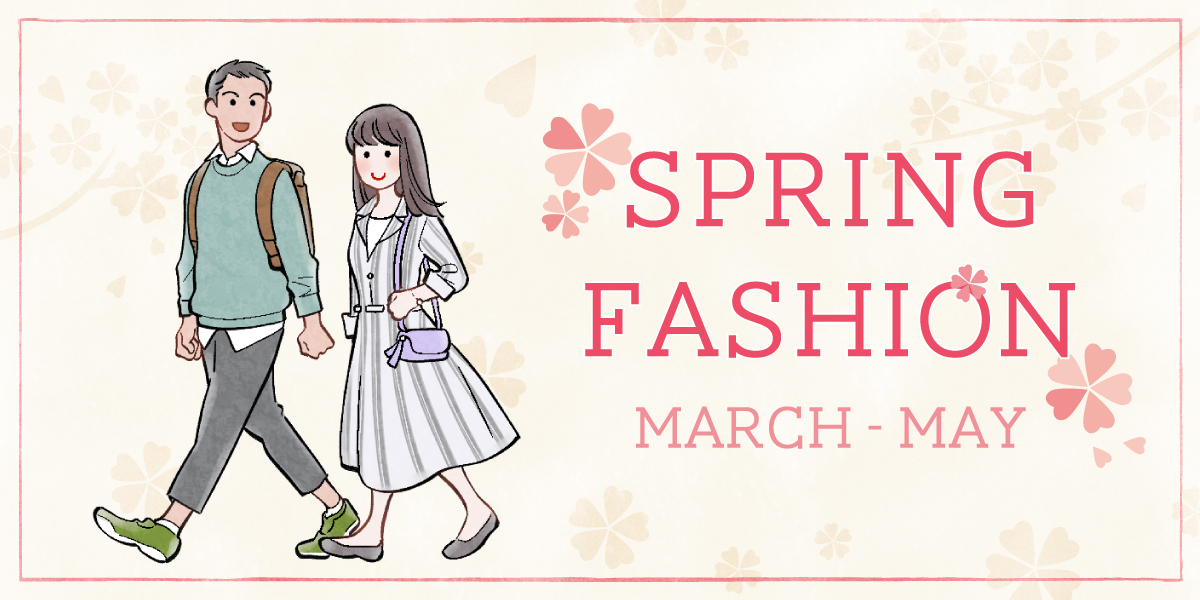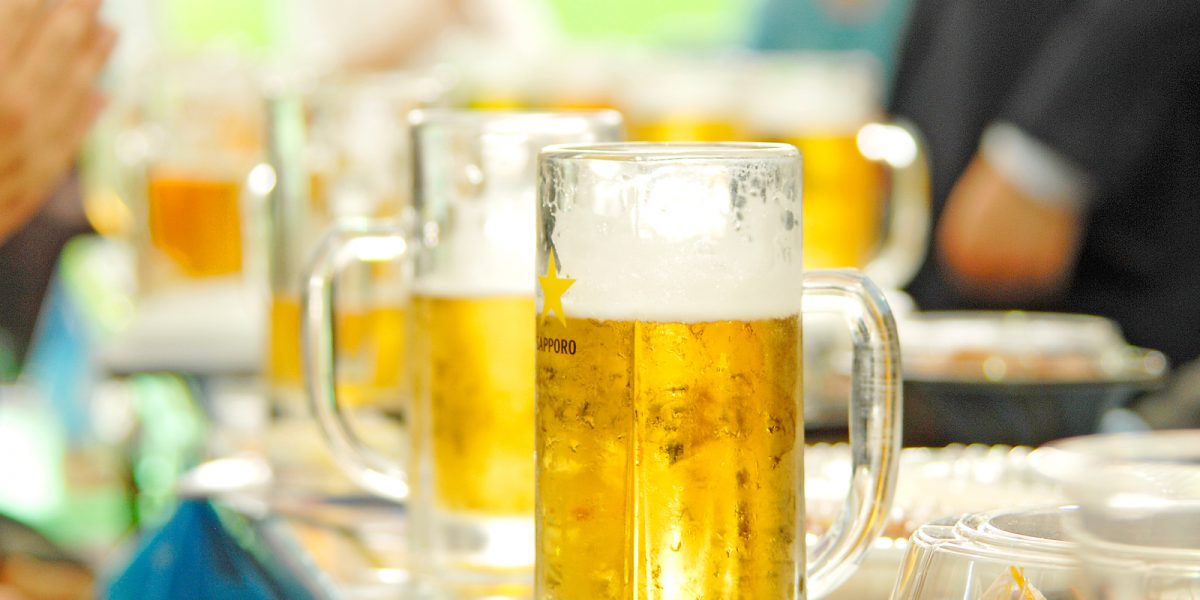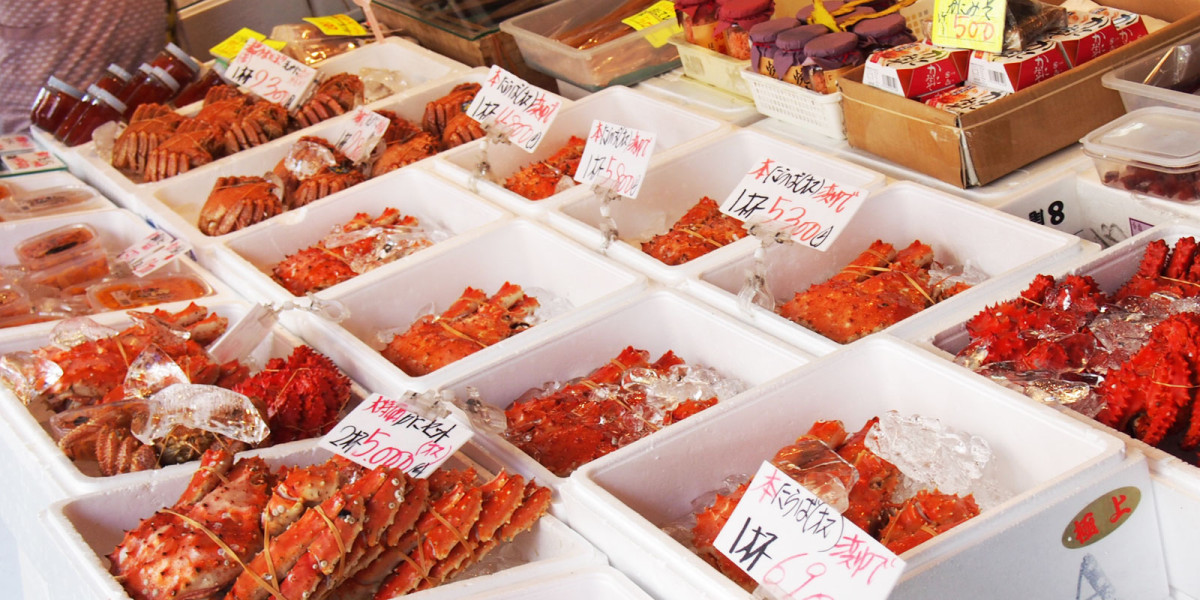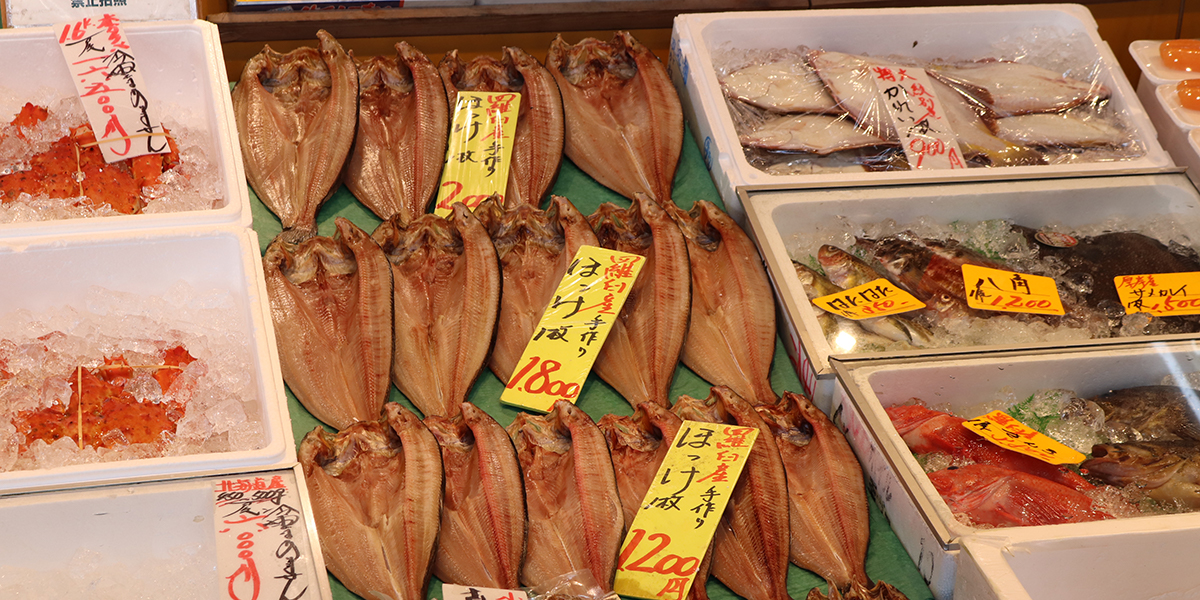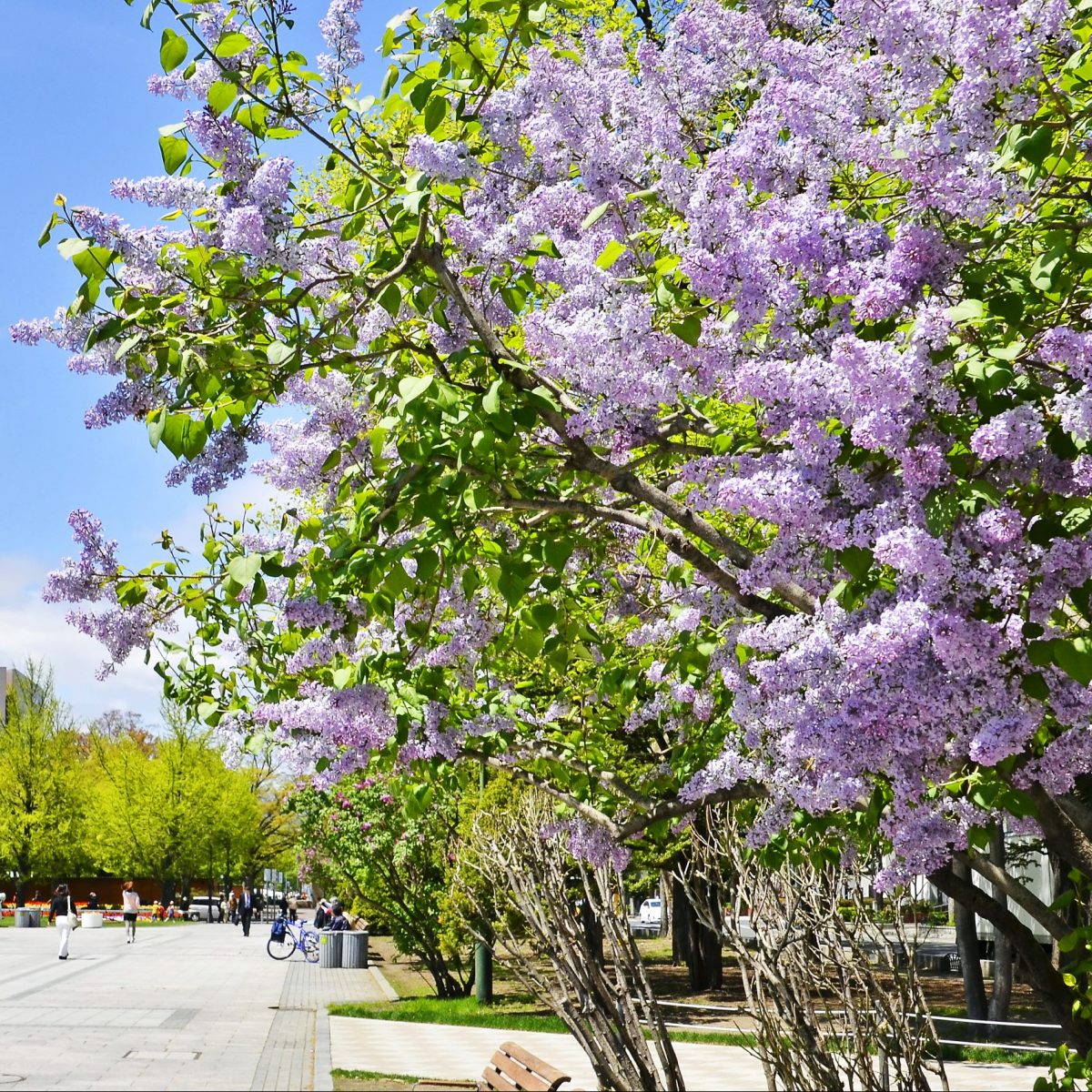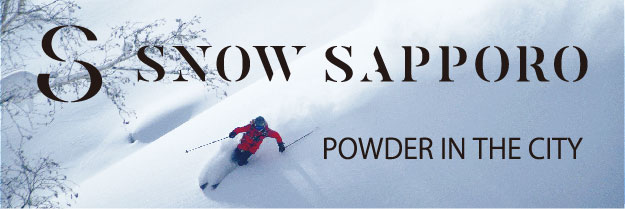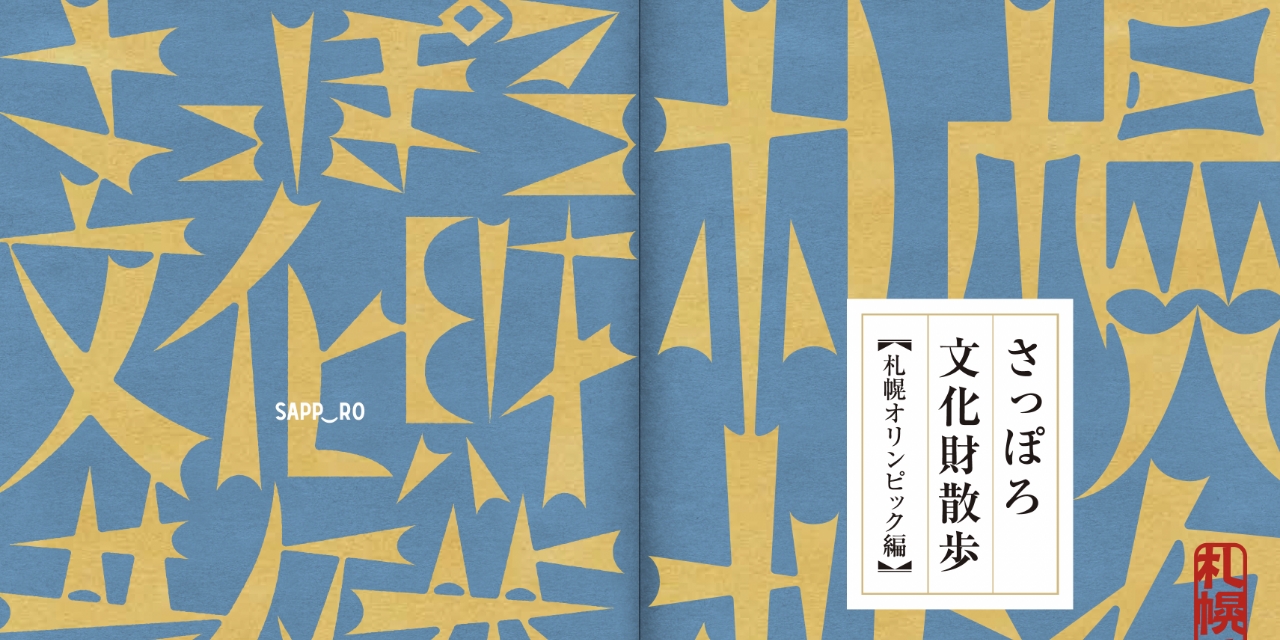
A Story Behind the Sapporo Olympics
Progression to a Modern City Told by the Legacy of the Sapporo Olympics
ー Sapporo – A City Newly Designed
by the Olympics ー
In 1972, Sapporo held the Winter Olympics for the first time in
Asia. Behind this, there is a history of skiing and skating being
assimilated into citizens’ lives as winter sports between the Meiji
and the Showa era.
Holding the Olympics was a turning point for the outlook of Sapporo as
the infrastructure was updated, contributing to becoming a modern
city. Top architects and designers were involved in the construction
of the sports facilities and creating the logo, and many of them
are still available today. Exploring these legacies from the Olympics
will open your eyes to the charm of the city of Sapporo.
Passion Invited the Olympics
The XI Sapporo Winter Olympics held from February 3 to 13, 1972 was
the first Winter Olympic Games in Asia. However, the Games should have taken place much earlier.
The 5th Games had been scheduled for Sapporo in 1940, but the
Japanese government withheld from it as the Sino-Japanese War
escalated. Thus the Winter Games ended up unrealized. The
second bid was much coveted for Sapporo. Although Sapporo lost the
bid for the 10th Games, for the 11th, Olympic Committee member
Shingoro Takaishi fervently called for the Olympics from his
sickbed which became a decisive factor for Sapporo to win the bid.
His passion invited the Games.
-

Shingoro Takaishi, the person who devoted to invite the Olympics
(Seifu no Mado (“window of the government” in English), July 15, 1960 issue)
History of Winter Sports in Sapporo
The history of Sapporo’s winter sports started in the Meiji era. Skating made its debut in Japan back in 1877 when William Brooks, an American teacher at the former Sapporo Agricultural College (now Hokkaido University), introduced the activity. He brought skates and showcased the art of skating in front of students, marking the inaugural moment when Japan experienced this winter sport. Later, upon returning from his studies in America, educator and diplomat Inazo Nitobe played a pivotal role in popularizing skating. He brought a pair of skates to the Sapporo Agricultural College, contributing significantly to the widespread adoption of this activity among the people. In 1926, an event called Ice Festival in Nakajima Park, where expressing gratitude to skating and ice, took place and people in costumes enjoyed skating until late at night.
As for skiing, in 1908, Hans Koller, a Swiss teacher at the then
College of Agriculture, Tohoku Imperial University (now Hokkaido
University) which the name was changed from Sapporo Agricultural
College the previous year, introduced alpine skiing and gained
popularity among the students.
In 1932, Okura-Schanze, Japan’s first ski jumping hill on an
international standard, was opened.
Started in 1930, the International Miyasama Ski Games, where citizens participate, has been continued even today.
Thus, skiing and skating was widely spread amongst the people in
Sapporo since the early modern period and people are familiar with
winter sports. In other words, the Winter Olympics was destined to
happen in Sapporo.
-

Former Okura-Schanze
(now Okurayama Ski Jump Stadium)

Sapporo Olympics was Born Here? – Paradise Hütte
Designed by Swiss architect Max Hinder, this building was built in 1926 as a mountain lodge of the Hokkaido University Skiing Club.
It is said that when Imperial Prince Chichibunomiya stayed in the Hütte, he described the future prospect of inviting the Olympics to the members of Hokkaido University Skiing Club: “If Japan were to hold a Winter Olympics in the future, Sapporo would be the best suited as its snow is the superior quality and it is a university town.”
-

The blueprint of the Paradise Hütte
(owned by Sapporo Olympic Museum)
Olympics Accelerate the City
Development of Sapporo
The Olympics influenced the city development of Sapporo. In 1967, a plan to change the municipality into a modern city was started, which became a turning point to improve the infrastructure of the town. Gorin-dori avenue and Sapporo-shindo avenue were constructed to connect the venues, along with bridges being built to make traffic smoother.
In 1971, the previous year of the Olympics, Hokkaido’s first expressway, the Do-O Expressway (from Chitose to Kita Hiroshima) and the Sasson Expressway (from Sapporo to Otaru) were opened. In addition, the Namboku Subway Line started operation along with Sapporo Underground Shopping Malls in which one can walk along comfortably, even in the freezing winter. The expansion of the underground area changed the way of people’s lives in winter as well as their fashion.
Japan’s leading architects and designers were involved in designing the venue and other facilities as well as the Olympic emblem. The Press Center (now Hokkaido Seishonen Kaikan Compass)was designed by Kisho Kurokawa, and Makomanai Speed Skating Rink (now Makomanai Open Stadium) was designed by Kunio Maekawa. The Olympic cauldron was designed by Sori Yanagi. Kazumasa Nagai designed the iconic snowflake Olympic emblem which was hung on the exterior wall of the facilities. The official poster was created by Yusaku Kamekura and others who was well known for designing the emblem for the 1964 Tokyo Olympics.The preceding Olympic bid poster was created by an Iwamizawa-born designer, Kenichi Kuriyagawa. These artists and architects promoted Sapporo to the world and people felt the advancement of Sapporo as an international city with a frenzy of excitement. Hence Olympics helped Sapporo transform a hub of winter sports in Asia.
-

The Olympic cauldron at the former Makomanai Speed Skating Rink
(now Makomanai Open Stadium) -

Sapporo Olympics emblem at the former Mikaho Indoor Skating Rink
(now Mikaho Gymnasium)
Legacies of the Olympics in the Community
The Olympic facilities remaining in Sapporo are still loved by
citizens. Other than the works of architects and the Olympic
cauldron, the former Olympic Village accepts residents as a Gorin Danchi
housing complex, and indoor skating rinks in Mikaho and Tsukisamu
are used as gyms with skating rinks. Okura-Shanze, turned Okurayama Ski Jump Stadium, holds major international and domestic
ski jumping competitions.
On the premises is the Sapporo Olympic Museum where you can learn
about winter sports and the Sapporo Olympic Games.
Sculptures by prominent artists such as Shin Hongo and Churyo Sato stand and blend into the streets and parks of Makomanai, which used to be a major Olympic venue. Recently, Ballad of Rainbow and Snow, a theme song of the Sapporo Olympics, has been played at some subway stations.
In this way, the legacies from the Sapporo Olympics are close at hand, so we recommend you to visit and see them with your own eyes. You will be sure to feel the history of Sapporo’s winter sports as well as the memories of the Olympics which created new culture in this city.
-

Exhibitions at the Sapporo Olympic Museum. -

Sculptures at Makomanai (Gorin Ohashi bridge)

Remaing Legacy From the Olympics in the Downtown Area
The memories of the Sapporo Olympics are seen around the Odori Park. In the Sapporo Games, the Olympic flame was lit at the Snow Festival venue in the Odori Park. The torch was paraded in the park, followed by the lighting of the cauldron in front of the city hall. On February 2, 2022, the Olympic Rings were installed at Odori Park to celebrate the 50th anniversary of the Sapporo Games.
-

Olympic Rings being set up to mark the 50th anniversary of the Sapporo Olympics
(Nishi 11-chome, Odori Park)
Two Jumping Hills and
the Sapporo Olympic Museum
In the Miyanomori area, there are two ski jumping hills:
Miyanomori Ski Jump Stadium and Okurayama Ski Jumping Stadium, where ski jumping took place in the 1972 games and where a number of
memories were born. There is also the Sapporo Olympic Museum which
showcases the history of winter sports and allows visitors to experience winter sports.
Every year, many visitors visit these tourist destinations that
represent Sapporo.
Okurayama Ski Jumping Stadium
The venue was completed in 1931 by funding from Baron Okura. It has been renovated six times so far. During the 1972 Winter Olympics, it was a venue for 90 metres class (now large hill) ski jumping, and a number of national and international competitions are held there today both in the winter and the summer. From the Observation Lounge, you can enjoy the stunning view spreading from the city of Sapporo with Odori Park at the center.
- Miyanomori 1274, Chuo-ku, Sapporo
- Available
-
・8:30am – 6:00pm (April 29th – October 31st)
・8:30am – 9:00pm (July 1st – September 30th)
・9:00am – 5:00pm (November 1st – April 28th) - Lift ticket prices: 1000 yen for adults, 500 yen for elementary school and younger children
-
From Maruyama Koen Station on the Tozai Line, take the
Kuramaru-go bus from Maruyama Bus Terminal. 15 minutes ride will
take you to the Okurayama Ski Jumping Stadium.
* Please check the website of JR Hokkaido Bus for the timetable.

-

At the Observation Lounge, you can simulate the excitement of a ski jumper taking off towards the city! -

Odori Park and Sapporo TV Tower seen from the Observation Lounge
Miyanomori Ski Jumping Stadium
It was a venue for the 70 metres class (now normal hill). Like Okurayama Stadium, it is still a venue for various competitions. Staged on this hill, Yukio Kasaya (gold), Akitsugu Konno (silver), and Seiji Aochi (bronze) sharing the podium was one of the best moments of 1972 Winter Olympics.
- Miyanomori 1-jo 18-chome, Chuo-ku, Sapporo
- Available
-
From Maruyama Koen Station on the Tozai Line, take Nishi 14
of JR Hokkaido Bus. Disembark at Miyanomori Schanze mae and walk
10 minutes.
* This place is not usually open to public, except only during competitions.

YOKOSO Movement Livened up by the Citizens
In Sapporo Olympics, the slogan YOKOSO (“Welcome!” in English) was adopted so that everybody feels friendliness, simplicity, and warm-heartedness. 56,000 YOKOSO stickers were made and put up everywhere in the town , such as shopping streets like Tanukikoji Shopping Arcade and department stores, while many people put a badge or a emblem on to welcome the athletes and tourists from around the globe. The English conversation handbook was also made and distributed to the citizens, while 2,000 people registered as volunteer interpreters to work on the streets and at each Game venue.

Sapporo Olympic Museum
Sapporo Olympic Museum was opened for the purpose of handing down the honor and achievements of holding the Winter Olympics, being admired not only by tourists but also citizens for providing the opportunities of learning about the history and the principles of Olympics; opportunities of participating in winter sports while encouraging people to deepen their interest and knowledge on winter sports, as well as to disseminate and expand them. In the Museum, there are six types of simulators with which visitors can feel the Olympic events from the athlete’s point of view, providing the excitement of speed and flight. It is a museum where visitors can enjoy and learn about how athletes move and feel.
- Miyanomori 1274, Chuo-ku, Sapporo
- 600 yen for adults, free for junior high school students and younger
-
・9:00am – 6:00pm (May – October)
・9:30am – 5:00pm(November – next April)
Last entry is 30-minutes prior to closing -
From Maruyama Koen Station on the Tozai Line, take the
Kuramaru-go bus from the Maruyama Bus Terminal. Ride 15 minutes.
Disembark at Okurayama Ski Jumping Stadium.
* Please check the website ofJR Hokkaido Bus for the timetable.

Olympic Games Section
This section introduces the history of Winter Olympics started in
1924 along with stories and the past designs of medals.
An exhibition of sports equipment which have transformed with the
generations. You will have the pleasure of revisiting nearly 100 years
of history of the Winter Olympics all at once.
Sapporo Olympic Legacy section
Visitors revisit the footprints of the 1972 Sapporo Olympics. You can learn about the roadmap to Asia’s first Winter Olympics and the highlights of the 11-day Games with pictures in a room which is a reproduction of the inside of Paradise Hütte.
Ski Jumping Okurayama
A simulator that gives you the feeling of ski
jumping athletes. Visitors can have a virtual reality experience
of a large hill jumping by standing in front of a spectacular
large screen. Let’s take off, fly with style, and land! Length and
points are displayed.
(* Only for elementary school students and over)

Okurayama Ski Jumping Stadium section
Okurayama Ski Jumping Stadium has upheld the ski jumping of Japan. This section introduces its history and appeal.


(Collected items by the Sapporo Olympic Museum)
Legacies Around the Makomanai Area
Makomanai area has the former Makomai Speed Skating Rink (now Makomanai Park Outdoor Stadium) , the current Gorin Danchi and other related facilities used as the Olympic Village, and a series of outdoor sculptures created by Sapporo-born sculptors. Why don’t you walk around the town exploring Olympic legacies?
Makomanai Park Outdoor Stadium
It was a venue for speed skating and the opening ceremony. The Olympic cauldron still remains there. Currently it is used as a skating rink in winter and a venue for various sporting events in summer. Makomanai Park, where the Stadium is located, is well-known for its cherry blossoms in Spring and autumn leaves in the fall, and many people visit the place to appreciate them.
- Makomanai-koen 3-1, Minami-ku, Sapporo
- Available
- From Makomanai Station on the Namboku Line, walk 30 minutes / take Jotetsu Bus (Minami 90, Minami 95, Minami 96, Minami 97, Minami 98, Kan 96) and disembark at Makomanai Kyogijo-mae, walk 2 minutes

Makomanai Park Indoor Stadium
It was a venue for ice hockey, figure skating and the closing ceremony. It is the nation’s first large scale dome shaped building in a snowy region. Currently it is used for national and international level sporting events as well as ice shows and concerts. Rental skates are available at the skating rink so you can casually enjoy skating.
- Makomanai-koen 1-1, Minami-ku, Sapporo
- Available
- From Makomanai station on the Namboku Line, walk 25 minutes / take Jotetsu Bus (Minami 90, Minami 95, Minami 96, Minami 97, Minami 98, Kan 96), disembark at Kamimachi 1-chome, walk 5 minutes.

Sculptures in Makomanai
In the Makomanai area, which used to be the center of the Games, around Makomanai Park, some outdoor sculptures by artists related to Sapporo remain. Sekka no Zou (Statue of Snowflake), which was created as a symbol of the Olympics, and Hanataba (Bouquet), which sits on both sides of the Gorin Ohashi Bridge, were sculpted by Shin Hongo, and Hisho (Flight) by Takeo Yamanouchi.


Edwin Dun Memorial Museum
Kaitakushi Makomanai Farm, founded in 1976 under the guidance of Edwin Dun, who had been invited by the Kaitakushi government, was reassigned to Ministry of Agriculture and Commerce after the discontinuation of Kaitakushi, and it was renamed as the Makomanai Breeding Farm in 1886. Dairy farming in Hokkaido was developed around this place until the US forces took it over in 1946. Currently the building is opened to the public in Edwin Dun Memorial Park in the southern part of Makomanai Park. Visitors can learn the roots of the Makomanai area which used to be the center of the Olympics.
- Makomanai Izumimachi 1-chome 6-1, Minami-ku, Sapporo
- From Makomanai Station on the Namboku Line, walk 5 minutes.

Cultural Assets Related to the Story
| Name of the cultural asset | State of the designation | Location |
|---|---|---|
|
Former Okura-Schanze (now Okurayama Ski Jump Stadium) |
Sapporo Furusato Culture 100 Selections | Miyanomori 1274, Chuo-ku, Sapporo |
|
Introduction of skis and skates (Collected items by the Sapporo Olympic Museum) |
Sapporo Furusato Culture 100 Selections | Miyanomori 1274, Chuo-ku, Sapporo |
| Helvetia Hütte | Sapporo Furusato Culture 100 Selections | Jozankei, Minami-ku |
| Paradise Hütte | Not designated | Teine Kanayama, Teine-ku |
| Soranuma Hut | Registered Tangible Cultural Property | Mount Soranuma, Minami-ku |
| Miyanomori Ski Jumping Stadium | Not designated | Miyanomori 1-jo 18-chome, Chuo-ku |
| Olympic Cauldron | Not designated | Makomanai, Minami-ku / Mount Teine / Sapporo City Hall |
|
Former Makomanai Speed Skating Rink (now Makomanai Park Outdoor Stadium) |
Not designated | Makomanai Park, Minami-ku |
|
Former Makomanai Indoor Skating Rink (now Makomanai Park Indoor Stadium) |
Not designated | Makomanai Park, Minami-ku |
| Former Olympic Village (now Gorin Danchi) | Not designated | Makomanai Midorimachi, Minami-ku |
| Gorin Ohashi Bridge | Not designated | Kawazoe 2-jo 1-chome, Minami-ku |
| Sculptures in Makomanai | Not designated | Makomanai |
| Mount Teine | Not designated | Teine-ku |
| Namboku Subway Line (Kita nijuyo jo – Makomanai) |
Not designated | Kita nijuyo jo, Kita-ku – Makomanai, Minami-ku |
| Sapporo Chikagai Underground Shopping Mall | Not designated | Odori, Chuo-ku |
|
Former Mikaho Indoor Skating Rink (now Mikaho Gymnasium) |
Not designated | Kita 22-jo Higashi 5-chome, Higashi-ku |
|
Former Tsukisamu Indoor Skating Rink (Now Tsukisamu Gymnasium) |
Not designated | Tsukisamu 1-jo 8-chome, Toyohira-ku |
| Former Teine Slalom and Giant Slalom Site (now Sapporo Teine) | Not designated | Teine Kanayama, Teine-ku |
| Edwin Dun Memorial Museum | Registered Tangible Cultural Property | Makomanai Izumimachi 1-chome 6, Minami-ku |
*Some of the above lists are not open to the public.
Let’s Visit the Cultural Assets Appearing in This Story!
-

Olympic cauldron(Mount Teine)
One of the legacies of the Sapporo Olympics, which was held at Mount Teine, is the four main competitions that included the giant slalom, slalom, bobsleigh, and luge.
-

Paradise Hütte
A Western-style mountain hut, restored to its original state, where visitors can look back at the highlights of the 11-day Sapporo Olympics through photos.
-

SAPPORO TEINE
The Highland Zone was the site of four technical skiing events, like the giant slalom, while the Olympia Zone hosted five sledding events, including the bobsleigh and luge.
-

Mount Teine
The giant slalom, slalom, bobsleigh, and luge events were held at Mount Teine during the 1972 Sapporo Olympics and is also home to the Paradise Hut, Japan’s first full-scale ski lodge.
-

Sapporo Municipal Subway
(Kita nijuyo jo – Makomanai)One of the urban infrastructure projects that was rapidly built for the Olympics was the subway system. Along the Namboku Line, the section from Hiragishi to Makomanai is elevated above the ground, sheltered from the weather, and is the only subway type of this kind in Japan.
-

Mikaho Gymnasium
The Mikaho Gymnasium is a versatile facility that can be used for a variety of purposes. It was first built as a figure skating venue, but it is now also used as a gymnasium in the summer and an ice rink in the winter.
-

Olympic cauldron (in front of the Sapporo City Hall)
The torch stand, which has been a fixture of Sapporo’s skyline since the 1972 Winter Olympics, was also used to ignite the torch for the 2021 Tokyo Paralympics.
-

Olympic Rings
(Nishi 11-chome, Odori Park)A monument, standing 3 meters high and 5.5 meters wide, was erected in Odori Park, Nishi 11-chome Plaza, to celebrate the 50th anniversary of the 1972 Sapporo Winter Olympics.
-

Sapporo Chikagai Underground Shopping Mall
The underground shopping mall, a symbol of Sapporo’s modernization progress, is still a popular destination for locals and visitors alike.
-

Okurayama Ski Jumping Stadium
The Okurayama Jumps, a historic ski jumping stadium that has been in use for over 90 years, was recently renovated. It is still used for international competitions and is also a popular tourist destination with its stunning views of the city from the top.
-

Introduction of skis and skates
(Collected items by the Sapporo Olympic Museum)Lecturers at Sapporo Agricultural School, now Hokkaido University, first introduced ice skating and skiing to Japan. The history of these sports can be traced back through photos and artifacts on display at the school.
-

Miyanomori Ski Jumping Stadium
The Miyanomori Jump Stadium, a normal hill facility built in conjunction with the Okurayama Jump Stadium, hosts events such as the Sapporo Mayor’s Cup Summer Jump Tournament.
-

Tsukisamu Gymnasium
The Tsukisamu Gymnasium is a popular venue for ice hockey in Japan, hosting many international and domestic tournaments throughout the year.
-

Makomanai Park Indoor Stadium
The 1972 Sapporo Olympic Stadium was the largest indoor skating rink in Japan at the time. It hosted the ice hockey and figure skating competitions, as well as the Games’ closing ceremony.
-

Gorin Ohashi Bridge
In conjunction with the 1972 Olympic Games, Kitanosawa Bridge was renamed to Odori Bridge. It spans across the Toyohira River and is located near Makomanai Park, the site of many Olympic events.
-

Sculptures in Makomanai
A sculpture walk around Makomanai Station and Makomanai Park is a great way to experience the city’s art and culture. The sculptures, created by Sapporo-affiliated artists and displayed around this neighborhood, are a testament to the city’s rich history and vibrant present.
-

Makomanai Park Outdoor Stadium
The Makomanai Stadium was the site of the opening ceremony and speed skating competitions during the 1972 Winter Olympics. It is also a popular venue for track and field competitions, and recently became the starting point for the Hokkaido Marathon.
-

Olympic cauldron (Makomanai Park Outdoor Stadium)
The Olympic flame tower, designed by world-renowned industrial designer, Sori Yanagi, served as a symbol of the games while burning brightly for 11 days during the 1972 Winter Olympics.
-

Gorin Danchi
The Makomanai Athletes’ Village is a lasting reminder of the 1972 Winter Olympics. The Olympic ringed logo is still visible on the building numbers of all 21 buildings, a testament to the city’s commitment to winter sports.
-

Edwin Dun Memorial Museum
Dan, one of the foreign advisors invited by the Hokkaido Development Commission, is commemorated in a memorial hall that houses a large collection of photos of Makomanai from around 1972.
-

Helvetia Hütte
The Helvetia Hut, a mountain lodge built in 1927 by Swiss architect Hindel and Hokkaido University lecturer Arnold Gubler, is still used by students today.
-

Soranuma Hut
The mountain hut, commissioned by Prince Chichibu and designed by Swiss architect Hindel in 1928, features an interior that is reminiscent of a high-quality mountain lodge in Switzerland.
Check Out All the Cultural Properties
in the Story!
-

Sumire Nakajima Main Branch
Since opening in 1964, the year of the Tokyo Olympics, this restaurant has been serving up delicious ramen that has evolved with the times. The secret to their success is the use of high-quality ingredients and the careful attention to detail that goes into each bowl.
Nakanoshima 2-jo 4-chome 7-28, Toyohira-ku, Sapporo
-

Sapporo Hitsujigaoka Observation Hill
The Austrian Pavilion, built in the style of a mountain lodge, is a great place to learn about Austrian skiing and culture. The iconic Clark statue, a symbol of friendship between Austria and Japan, is a popular photo spot for visitors.
Hitsujigaoka 1, Toyohira-ku, Sapporo
-

Hongo Shin Memorial Museum of Sculpture
This small museum, located in the quiet residential area of Miyanomori in Central Ward, is home to over 1,800 sculptures and paintings by Hongo Shin, a renowned postwar Japanese artist who was born in Sapporo.
Miyanomori 4-jo 12-chome, Chuo-ku, Sapporo
-

Aji no Sanpei
The shop that invented miso ramen is also credited with laying the foundation for the current trends of Sapporo ramen, using the popular curly noodles and bean sprouts as ingredients.
Daimaru Fujii Central BLD 4F, Minami 1-jo Nishi 3-chome, Chuo-ku, Sapporo
-

Nouvelle Pousse Okurayama
Nouvelle Pousse, which means “new sprout” in French, is a restaurant that is dedicated to creating new and innovative cuisines that combines the best of French and Japanese cooking.
Sapporo Olympic Museum Annex 2F, Miyanomori 1274, Chuo-ku, Sapporo
-

Rokkatei Makomanai Hall
This Hokkaido confectionery shop uses only the finest ingredients to create delicious and innovative sweets. On the second Wednesday of odd-numbered months, the shop also hosts live music performances.
Makomanai Kamimachi 1-chome 15-16-2 , Minami-ku, Sapporo
-

Shirakaba Sanso Makomanai Main Branch
This popular Sapporo restaurant is known for its delicious miso ramen. The soup is rich and flavorful, while the pork is tender and juicy.
Makomanai Kashiwaoka 3-chome 1-40 , Minami-ku, Sapporo
-

Sapporo Dome
The Sapporo Dome is a multipurpose stadium that hosts large-scale events, as well as national soccer and baseball games. It is also a popular tourist destination, with its observation deck and a kids’ park.
Hitsujigaoka 1, Toyohira-ku, Sapporo
-

Sapporo Coffee Kan (Clock Tower Garden Terrace Shop)
Sapporo Coffee House, Clock Tower Garden Terrace: A peaceful oasis in the heart of the city. The soothing sound of the clock tower’s bell helps to drown out the hustle and bustle of the cityscape.
Sapporo Tokeidai BLD B1F, Kita 1-jo Nishi 2-chome, Chuo-ku, Sapporo
-

Tsukisappu Jingisukan Club
This restaurant specializes in charcoal-grilled lamb. The fresh lamb is marinated in a house sauce that gives it a rich, flavorful taste. The open terrace is an especially popular spot for diners during the warmer months.
Tsukisamu Higashi 3-jo 11-chome 2-5, Toyohira-ku, Sapporo
-

Takino Suzuran Hillside National Park / Takino Snow World
This park is a year-round destination for visitors of all ages. In the spring and fall, the park’s flower fields are in full bloom, and visitors can enjoy a variety of outdoor activities, such as hiking, biking, and picnicking. In the winter, the park transforms into a snowy wonderland, with a variety of fun activities, such as skiing, snowboarding, and sledding.
Takino 247, Minami-ku, Sapporo
-

Jozankei Dam Downstream Park and Museum
This facility is a great place to enjoy the beauty of nature in all four seasons. In spring, the park is filled with cherry blossoms, and in autumn, the leaves turn a brilliant red. The park also has a museum that tells the story of the dam and the natural environment of Jozankei. It’s the perfect place to have a picnic and learn something new.
Jozankei 8, Minami-ku, Sapporo
-

Momijitei
This restaurant is a great place to enjoy the taste of Hokkaido. The fresh, hand-made soba buckwheat noodles are made with stone-ground flour. The seasonal fish and mountain vegetables, all locally sourced and served as tempura, create a wonderful blend of flavors that come together perfectly.
Jozankei Onsen Higashi 3-choem 228 , Minami-ku, Sapporo
-

Yama to Ippuku Sweets Shop
This confectionary shop is a great place to find baked goods that are both delicious and comforting. Their muffins are made with fresh, local ingredients, and are perfect for any occasion, whether you are out on the mountain or relaxing at home.
Frontier Teine 1F, Teinehonmachi 3-jo 4-chome 3-30 , Teine-ku, Sapporo
-

Hoheikyo Onsen
This onsen is a popular day spa in Hokkaido. The 100% natural hot spring water will soothe your tired muscles, and the spacious open-air bath will give you a panoramic view of the mountains. They also serve tasty Indian curry paired with delicious naan as well.
Jozankei 608-2 , Minami-ku, Sapporo
- Publishing
-
Sapporo City Council for the Promotion of Historical and Cultural
Town Development
(The secretariat: Cultural Properties Division, Culture Department, Citizen’s Cultural Bureau, Sapporo City) - 10F Sapporo Clock Tower Building 2-chōme-1 Kita 1 Jōnishi, Chuo Ward, Sapporo,
- TEL 011-211-2312
- August 2022






